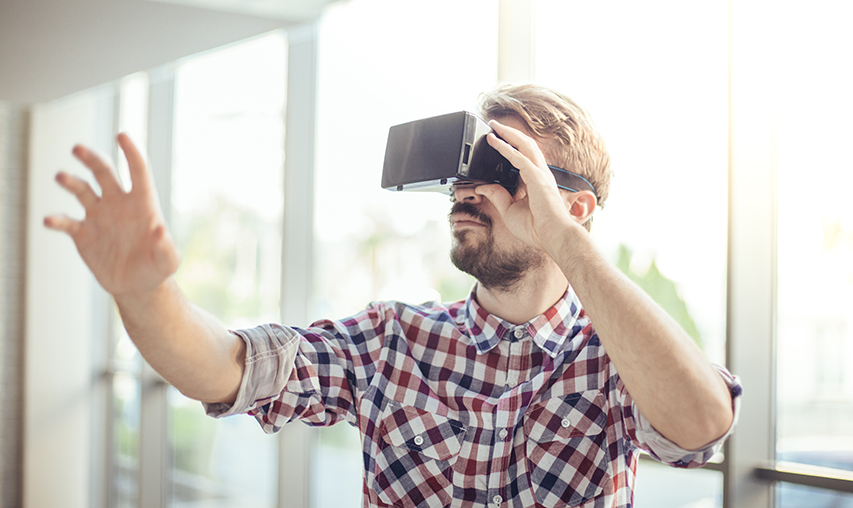
Come On… Is Virtual Reality Training Really Necessary for Office Workers?
August 23, 2018
If you’re like me, you’re constantly clicking on articles on how virtual or augmented reality technology is being combined with various training programs in super cool ways.
There’s virtual reality education to improve rail safety for children. Virtual reality training to prepare first responders for disasters and emergencies. Virtual reality training to help police run through realistic bank robbery scenarios. Pick any industry—sports, military, healthcare, you name it—and it’s easy to imagine how VR could be used to take training to even more effective heights. With VR, you can immerse trainees in realistic environments that take engagement to an entirely new level without exposing them to the real-world dangers of fighting fires or operating industrial machines until they’re ready. VR leaves no room for multi-tasking it or faking your way through a session. But it does guarantee that trainees are able to walk away without injury.
But what about those of us who work out of everyday office environments? Is VR really necessary? Is there much value to be gained by using VR to make remote workers feel like they’re all sitting around the same conference table or drinking from the same water cooler? There’s plenty of room for debate, of course, but as more workforces become virtualized, VR can provide a significant benefit by combating the feeling of remote workers being cut off from their teams or the skepticism on-site workers feel about remote worker dedication or productivity. In short, VR can help bring people together and create the sense of teamwork, camaraderie and collaboration that only a shared physical space can normally provide.
But where VR is poised to make the most gains is in training. Most people absorb and recall more information when learning is a poignant experience. They want to see, interact with and apply what they’re being taught, not simply hear about it or read about it. There are plenty of high-adrenaline situations workers may face in an office environment that benefit immensely from the immersive experience VR can provide. These include workforce safety scenarios involving sexual harassment, assault or even an attack on the workplace—situations that traditional training programs often, if not always, fail to replicate (and therefore fail entirely) simply because they don’t seem real. The best training comes from real-life experience, and VR is the best technology we have today to emulate real life, without the need for a full-scale sound stage and actors. A trainer can walk you through the steps of what to do in the event of a major earthquake, but if you’re not actually feeling the fear and adrenaline that comes when you are surrounded by disaster, you’re not learning how to deal with a certain situation while feeling the pressure and stress of responding to the problems that situation throws at you in the moment.
On the lighter side, VR can also assist with everyday office training scenarios—those with professional stressors vs. emergency responses—in quite meaningful and impactful ways. One area in particular that stands to greatly benefit from VR training is customer service. VR-based orientation to a new office environment such as a bank branch, along with processes and procedures throughout the facility, could be greatly reduced in time and operational risk, without a single ‘real customer’ interaction or embarrassing moment. Similar to the workplace safety situations listed above, all kinds of customer service scenarios can be set up to help workers learn how to weather the toughest of people and situations. Such training could also be used to help workers learn how to work with each other by testing their communication and collaborative skills against workers with different personality types, age groups, or cultural backgrounds.
One final note to add: for today’s younger workers, office technology plays a big role in their job satisfaction. They don’t believe the technology they rely on at home should be superior to the technology they rely on at work. A recent Penn Schoen Berland study found millennials are even more likely to quite a job if the technology isn’t up to par. 73% of the millennials that participated in the survey said having virtual sharing tools in the workplace are “extremely important”.
Is VR training an absolute must-have in today’s office environment? Perhaps not. But as VR training hits its stride and is embraced by more organizations, more people will become accustomed to learning this way. VR will become a training imperative for people powered organizations. Those that are experimenting with VR training now will later be able to wield it strategically when everyone else is still working to catch up.
Which one of those organizations will yours be?











